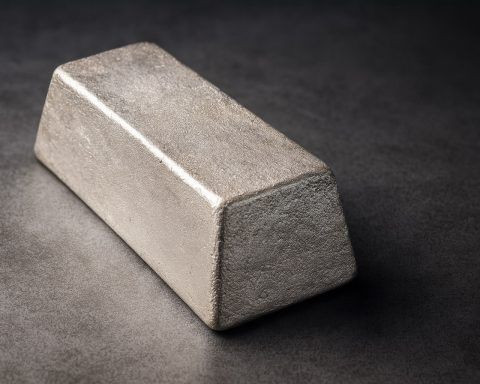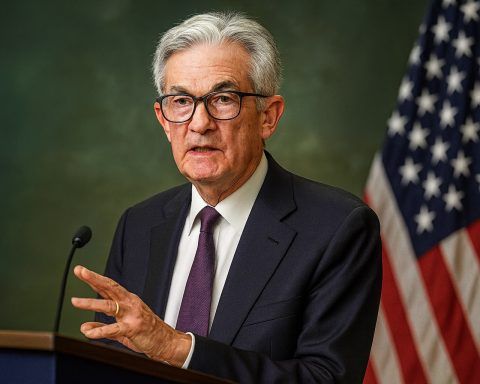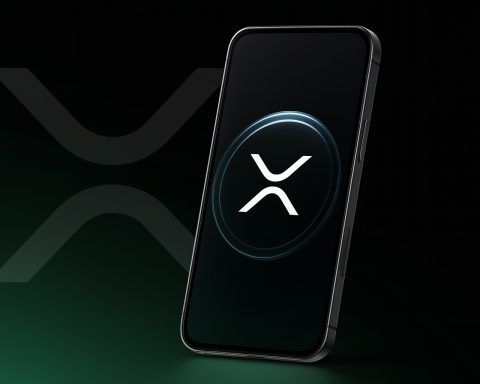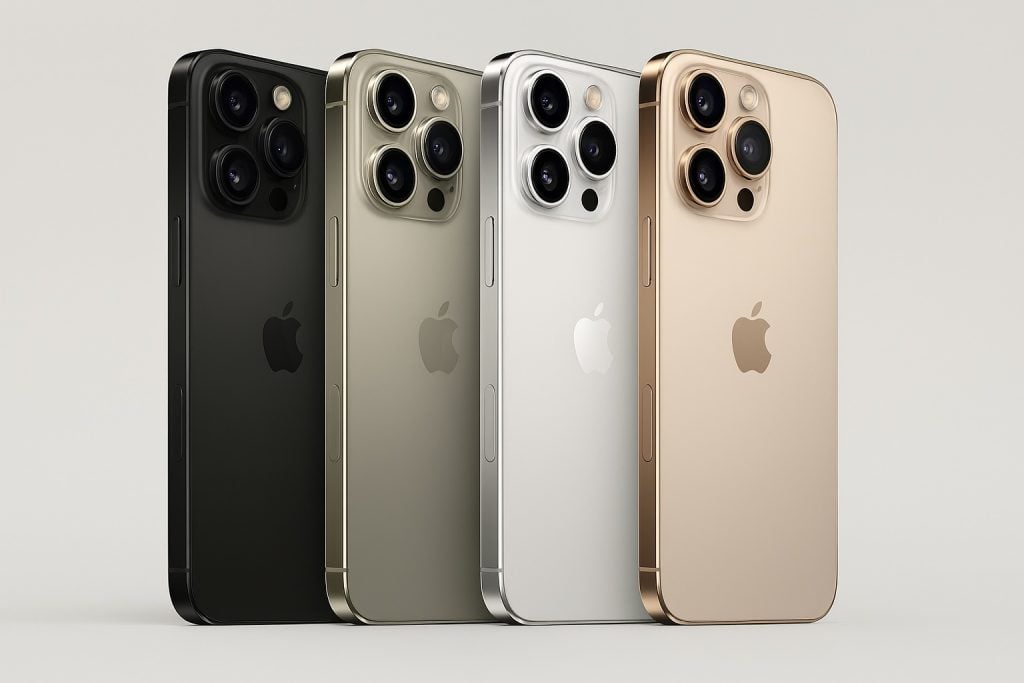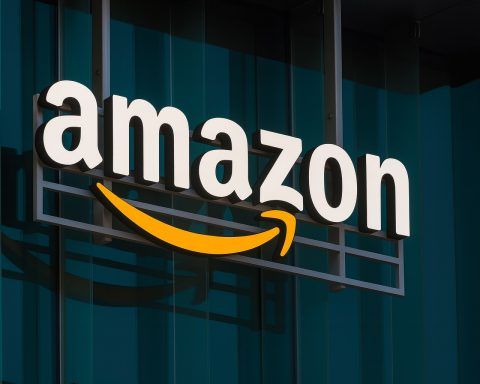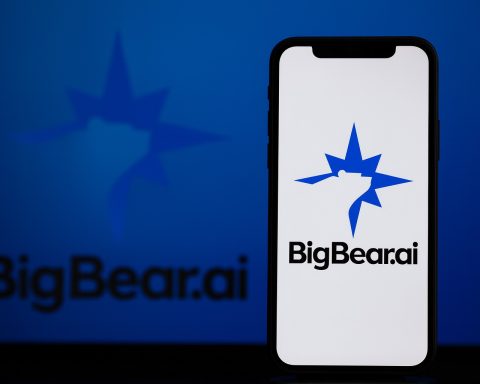- Google scheduled its Made by Google event for August 20, 2025 in New York City, where four Pixel models—Pixel 10, 10 Pro, 10 Pro XL, and Pixel 10 Pro Fold—will debut alongside the Pixel Watch 4.
- The Pixel 10 family will run Android 16 with a redesigned UI and be powered by Google’s Tensor G5 chip built by TSMC.
- The Pixel 10 Pro Fold is rumored to be the first fully dust-proof foldable with an IP68 rating, a 6.4-inch outer display rated at 3000 nits, a redesigned hinge, and internal specs including a 3nm Tensor G5, 16GB RAM, up to 1TB storage, and a battery about 7% larger than last year.
- Samsung’s Galaxy Z Fold 7 features a 200MP main camera, a 10MP under-display selfie camera, is 8.9mm thick when closed, omits the S Pen this generation, and starts around $1,999.
- Apple’s iOS 26 introduces the ‘Liquid Glass’ design with translucent, reflective UI, on-device Live Translation, Visual Intelligence with ChatGPT integration, and new Genmoji and Image Playground AI features.
- iOS 26 adds Passwordless Passkeys, a Foundation Models API for developers to access on-device AI, and a Call Screening and Hold Assist feature to manage unknown calls and on-hold scenarios.
- Louisiana’s LA Wallet digital driver’s license is approved for nationwide TSA use for a three-year pilot through 2028, and Apple Wallet will add eight more US states to Wallet IDs, bringing the total to about 17 states.
- Analysts expect a 2026 iPhone Fold with Samsung-made foldable OLED displays, a 4.5–4.8mm unfolded thickness (roughly 9mm folded), a 7.5–7.8-inch internal display, a dual 48MP rear camera, and a price around $1,800–$2,000 with initial 10–15 million units.
- Block’s Cash App now supports Tap to Pay on iPhone for Cash App Business merchants, enabling acceptance of Apple Pay, Google Pay, and card payments via NFC.
- Global smartphone shipments rose about 1% in Q2 2025 to 295 million, with Samsung at roughly 58 million units, Huawei surging to about 18% share in China, and Apple remaining around fifth in China.
Google’s Pixel 10 Event: AI-Powered Phones and Dustproof Foldables
Google has officially scheduled its Made by Google launch event for August 20, 2025, in New York City, and the star of the show will be the Pixel 10 series [1]. According to Google’s media invite, we can expect four new Pixel models – the Pixel 10, 10 Pro, 10 Pro XL, and even a Pixel 10 Pro Fold – alongside the Pixel Watch 4 smartwatch [2] [3]. This timing is a bit earlier than usual, seemingly to get a jump on Apple’s iPhone launch in September [4]. AI will take center stage: Google’s Pixel lineup is said to be “powered by the company’s artificial intelligence technology” across all devices [5]. In fact, the entire Pixel 10 family will run Android 16 with a bold, redesigned UI that Google previewed at I/O, and will pack Google’s new in-house Tensor G5 chip (built by TSMC instead of Samsung for better efficiency) [6] [7]. “All of the phones will run Android 16 and are set to feature a redesigned, bolder user experience,” notes Bloomberg’s report [8], emphasizing Google’s focus on software and AI features over flashy hardware changes.
One particularly exciting rumor is that Google’s next foldable, the Pixel 10 Pro Fold, could be the first completely dust-proof foldable on the market [9]. A leak via Android Headlines suggests it will carry an IP68 rating for dust and water resistance, whereas current Samsung and Motorola foldables are water-resistant but not fully dust-tight [10]. The Pixel 10 Pro Fold may also feature a slightly larger 6.4-inch outer screen (with a super-bright 3000-nit display) thanks to a redesigned hinge that closes with virtually no gap [11]. Under the hood it’s expected to include Google’s 3nm Tensor G5 processor with 16GB RAM and up to 1TB of storage, plus a 7% bigger battery than last year’s model [12]. Interestingly, despite these upgrades, its camera setup might remain the same as the Pixel 9 Pro Fold’s – a 48 MP main sensor plus ultrawide, telephoto, and dual selfie cameras [13]. Google is clearly doubling down on AI features in this Pixel generation. We might see more AI-driven Assistant capabilities and on-device generative AI. In fact, Google’s Pixel software updates already hint at this direction: the company just announced new “AI Mode” search features and an “agentic” calling assistant for Pixel phones [14] [15]. It’s likely the Pixel 10 will launch alongside Android 16 (now in a new “Canary” beta channel for bleeding-edge testers [16]), showcasing features that “iPhone users realize they’ve been missing”, as Google’s Android head put it [17]. All eyes are on Google to see how these AI enhancements and the expanded Pixel family will stack up against the competition this fall.
Samsung’s Galaxy Z Fold 7: Camera Upgrades, Trade-Offs, and S Pen Talk
Samsung’s latest foldable flagship, the Galaxy Z Fold 7, is making waves with its camera improvements and design refinements over last year’s model. In a detailed 10-round camera face-off, Tom’s Guide found the Fold 7 to be “a notable camera upgrade over the Z Fold 6”, thanks largely to new hardware [18] [19]. Samsung bumped the main camera from 50MP to a whopping 200MP sensor this year, and also replaced the Fold 6’s under-display selfie camera with a much sharper 10MP camera – a change that yielded “dramatically improved” inner selfies [20] [21]. In test shots, the Fold 7 produced richer colors and better low-light performance, aided by an upgraded image processor (Samsung calls it the ProVisual engine) [22]. The ultrawide camera saw especially obvious improvement in clarity, even more than the raw megapixel boost of the main camera, according to the review [23]. The verdict? After comparing photos in various scenarios, Fold 7 came out on top in most rounds, reinforcing that a year’s progress (and new silicon) makes it a superior camera phone to the Fold 6 [24].
Samsung also put a big emphasis on sleeker design this generation – and that meant some sacrifices. The Galaxy Z Fold 7 is just 8.9mm thick when closed, significantly slimmer and lighter than its predecessor, due to a re-engineered “Armor Flex” hinge and trimmed components [25] [26]. To achieve this, Samsung omitted a few features that power users noticed: there’s no built-in S Pen stylus support this year (and even the under-display camera was dropped for a standard punch-hole) [27] [28]. Samsung’s Kang Min-seok, head of mobile R&D, explained that the Fold 7’s design decisions were a “trade-off” aimed at delivering the thin-and-light form factor users wanted [29]. “Please think of it as a ‘trade-off’ where you lose one if you choose one,” Kang told Korea’s ET News, noting that the team purposefully removed or held steady on certain features to prioritize an ultra-slim build [30].
Notably, Samsung hasn’t given up on the S Pen entirely – it’s just taking a hiatus. Kang confirmed the company is “researching and developing thinner and innovative technologies for the S Pen” so that it can “reconsider [adding it back] when the level of perfection increases and there is consumer demand.” [31] In other words, once they can integrate a stylus without making the phone chunky, the beloved S Pen may return to the Fold lineup. This should be welcome news to fans who missed the stylus on the Fold 7. In the meantime, Samsung is sweetening the deal for its new foldables with aggressive promotions. According to Forbes, Samsung is offering nearly $963 worth of incentives for Galaxy Z Fold 7 buyers who preorder or trade-in [32]. This likely includes hefty trade-in credits for older devices and bonus Samsung Store credits (for example, a $50 credit just for registering interest via email [33]). The message is clear: Samsung “really wants you to buy the Galaxy Z Fold 7” [34] and is willing to make the price a bit less eye-watering. The Fold 7 starts around $1,999, so any discount helps.
Samsung also unveiled the Galaxy Z Flip 7, a stylish compact foldable, alongside the Fold. Both devices feature refined hinges and even some titanium in their frames for added durability [35]. And while battery life and charging didn’t see huge leaps (a point some reviewers griped about [36]), Samsung did manage to increase the Flip 7’s battery capacity slightly by using higher-density boards [37]. All told, Samsung is calling the Fold/Flip 7 the “next chapter” of its foldables, emphasizing polish and AI integration (these phones leverage on-device AI for photography, app optimizations, etc.). In fact, Samsung’s own marketing highlights new AI features, promising that its “default Galaxy AI features will remain free indefinitely” for users [38] – a not-so-subtle jab at competitors who might charge for premium AI services. With Google’s Pixel Fold now in the game (and possibly outdoing Samsung on dust-proofing), the foldable race is heating up. But Samsung’s early lead, camera prowess, and iterative design improvements in the Z Fold 7 keep it in a very strong position.
Apple iOS 26: A “Liquid Glass” Makeover and Smarter iPhones
Apple’s upcoming iOS 26 (yes, Apple appears to be leaping in version numbers) is shaping up to be one of the biggest iPhone software overhauls in years. At WWDC 2025, Apple previewed a bold new design language called “Liquid Glass” that will make the entire interface more translucent, fluid, and dynamic [39] [40]. Think of app windows and widgets with a frosted-glass effect that reflects surrounding colors and “refracts its surroundings” for a lively depth effect [41]. This design touches everything from icons to navigation elements. Apple says the result is an interface that is “more expressive and delightful, while keeping iOS instantly familiar” [42]. For example, on the Lock Screen, the clock can now fluidly adapt and tuck behind elements of your wallpaper in a 3D effect, and moving your iPhone causes spatial wallpapers to animate subtly [43]. Even built-in apps are getting simplified layouts – the Camera app in iOS 26 has a cleaner two-tab design with key controls easier to reach [44], and the Photos app now splits your library vs. collections into separate tabs [45]. Safari is moving its address bar and controls to float at the bottom (similar to what Chrome on Android is now also doing) so you see more of the webpage [46]. All these changes have stirred up a lot of discussion during the beta; some users love the fresh look, while others called early beta versions of Liquid Glass “a visual nightmare” – prompting Apple to refine the design in beta updates [47]. But one thing’s for sure: iOS 26 looks unlike any iOS before, with a glassy, futuristic aesthetic.
Beyond looks, iOS 26 is infusing AI and “Apple Intelligence” everywhere. Some of the flashiest new features leverage on-device machine learning to make daily tasks easier (with privacy in mind). For instance, Live Translation is now built into the system – you can have iOS translate text or audio in real time during phone calls, FaceTime, or even in Messages chats, entirely on-device [48] [49]. This means you could speak to someone in another language on a FaceTime call and see live captions translated, with no data leaving your phone. Apple achieved this with Apple-built language models that run locally, ensuring “users’ personal conversations stay personal.” [50] Another headline feature is expanded Visual Intelligence: in iOS 26, you can literally ask your iPhone about anything on your screen. If you have a photo or a webpage open, you can invoke a new assistant (which intriguingly can interface with ChatGPT for extra info) to get context [51] [52]. For example, looking at a painting in Safari? You could ask “What’s the history of this painting?” and iOS will use visual search plus ChatGPT to inform you [53]. Or if there’s an event mentioned in an email, the system will recognize it and suggest adding it to your calendar, auto-filling the date and location [54]. This is Apple playing catch-up (and one-up) with Google’s AI features like Lens and Assistant’s screen context, but doing it in a characteristically integrated way.
Apple hasn’t stopped there. New generative AI features are sneaking in under playful names: “Genmoji” and “Image Playground” will let users create custom mash-up emoji and stickers using AI. You can mix your favorite emoji and even add a descriptive prompt to generate a new cartoon image (Apple showed examples of this at WWDC – it’s like having a mini DALL-E generator for stickers). On the privacy/security side, iOS 26 introduces Passwordless Passkey sharing and other under-the-hood improvements, but one standout is a huge quality-of-life feature for phone calls: Call Screening and Hold Assist. Taking a page from Google’s Pixel, Apple’s Phone app now can screen unknown callers by answering for you and asking who’s calling – you’ll get a real-time transcription of their response so you can decide to pick up or decline [55] [56]. This feature, combined with the existing Live Voicemail, means unknown calls won’t bother you as much. And if you do end up on hold with customer service, iOS 26’s Hold Assist will wait on hold for you – your iPhone listens to the hold music and will alert you once a human comes on the line [57] [58]. No more wasting 30 minutes listening to elevator music. As one tech commentator gushed, “Hold Assist alone could be a serious time-saver.” Apple’s essentially matching Google’s call-screening and hold-for-me functions, which is great news for iPhone users.
With all these changes, excitement for iOS 26’s public beta has been high. Apple just released the third developer beta (and the first public beta is expected any day now, as of mid-July 2025) [59]. Early reports have been mixed – the new Liquid Glass UI looked overly transparent at first, but Apple has been tweaking it (beta 3 toned it down after feedback) [60]. The New York Times notes that both iOS 26 and Android 16 are aiming to change how we use our phones by integrating more AI and simplifying interfaces [61]. And indeed, Google’s Android 16 (likely launching on the Pixel 10) similarly focuses on personalization and AI smarts. But Apple’s approach leans heavily on on-device processing. As Apple’s Craig Federighi likes to say, it’s “Apple Intelligence” rather than generic AI – features like Live Translation, Visual Look Up, and even new Autocorrect 2.0 (which now uses a transformer language model for much better typing predictions) all happen privately on the iPhone. Apple is even opening some of its core AI tech to developers: iOS 26 includes a Foundation Models API so third-party apps can tap into the same on-device AI models Apple uses, “giving developers direct access to powerful intelligence that’s fast, private, and offline” [62] [63]. It’s a fascinating move that could unleash a wave of AI-powered apps without server costs.
Lastly, iOS 26 and its sibling releases (iPadOS 26, watchOS 11, macOS “Tahoe” 26, etc.) mark a bit of a rebranding in Apple’s version scheme – aligning with the year more explicitly. That’s why we see iOS 18.6 still in testing (an interim iOS 18 update) while iOS 26 is the next major launch in the fall [64]. It’s a little confusing, but the bottom line is: come September, your iPhone’s look and feel may transform dramatically. As one reporter quipped, Apple’s “taking a page out of the Apple Playbook” – merging its aesthetic finesse with new AI tricks – to ensure the iPhone remains cutting-edge [65]. If you’re brave enough to try the public beta, you’ll get an early taste of this future. Otherwise, buckle up for the official release, which should coincide with the iPhone 17 launch in a couple of months.
Apple vs Samsung in Court: Trade Secrets and a Possible iPhone Ban?
In an unusual turn of events, a legal battle over OLED screen technology is threatening to ban some future iPhones in the U.S. – though Apple insists it won’t actually come to that. The issue revolves around Samsung Display’s allegations that Chinese screen-maker BOE stole its OLED display tech, which BOE then supplied to Apple. The U.S. International Trade Commission (ITC) recently issued a preliminary ruling siding with Samsung, finding that “BOE has been making OLED panels through misappropriation of [Samsung’s] trade secrets.” [66] [67] As a remedy, the ITC recommended a ban on importing any OLED panels – or devices containing them – that use the stolen tech [68] [69]. On paper, that could include certain iPhone models that use BOE-made screens. In fact, BOE has provided displays for some standard iPhone 15 and 16 models (and was slated to for some iPhone 17 units, especially the China-market versions) [70] [71]. Headlines warned that “Some iPhones Could Be Banned in the U.S. Over Stolen Trade Secrets” [72], and even that Samsung might get the iPhone 17 banned before it launches [73].
However, Apple is not panicking. The company responded that it is “not a party to this case, and the order has no impact on any Apple products.” [74] Apple’s reasoning is that it can simply avoid using BOE panels for U.S. models if needed. Indeed, the preliminary ITC ruling noted that any already-manufactured products with BOE screens would be exempt from a ban, focusing only on future imports [75]. Apple has multiple screen suppliers (Samsung and LG Display being the biggest for OLED iPhones), and BOE’s role, while growing, is still relatively minor for U.S. iPhones [76] [77]. In fact, Apple reportedly approved BOE only for certain non-Pro iPhones and for units sold in China, precisely because BOE’s tech (e.g. LTPO panels for ProMotion) wasn’t up to par for the flagship models [78] [79]. And going forward, Apple can pivot more orders to Samsung or LG if BOE gets barred [80] [81]. Industry analysts note that Apple had already cut BOE out temporarily in the past when BOE was caught making unauthorized screen design tweaks for iPhones [82]. So Apple holds the levers here.
It’s worth noting this ITC process is still ongoing – a final decision will come by November 2025, and then the U.S. President has a 60-day window to review it [83]. Given the political backdrop (the ruling specifically mentions that by November, President Trump would have two months to decide on any ban [84]), it could even become a geopolitical bargaining chip. But practically speaking, consumers likely won’t see iPhones yanked from shelves. At worst, Apple might shuffle its supply chain to ensure U.S. units use Samsung or LG screens exclusively, and perhaps restrict BOE-screened iPhones to certain markets (something it was already reportedly planning for some models) [85] [86].
Meanwhile, this spat underscores how intense the display tech rivalry is. Samsung has even filed a separate civil lawsuit seeking damages from BOE for the alleged tech theft [87]. The ITC’s preliminary finding stated BOE violated the Tariff Act and called for both a restricted exclusion order (blocking imports of the offending OLED panels/modules) and a cease-and-desist to stop sales of devices with them [88] [89]. It’s a strong stance against intellectual property theft. One Korean report noted that this is the first time in years Huawei had regained a top position in China’s market partly by using homegrown tech to circumvent U.S. sanctions – ironically, here we have a Chinese firm (BOE) in trouble for allegedly taking Korean (Samsung) tech secrets. In any case, Apple’s biggest concern would be ensuring iPhone 17 production isn’t disrupted. The company only just recently started working with BOE for high-end screens (like a planned BOE-made iPhone 17 Pro display, again only for China due to quality issues [90]). Apple can likely swap those out if needed. As AppleInsider dryly noted, “Chinese-made iPhones won’t be banned in the US” despite the alarmist headlines – Apple will make sure of it [91] [92]. And with Apple just having picked Samsung to supply the OLED panels for its first foldable iPhone (more on that next), it’s clear Apple and Samsung Display have a symbiotic relationship despite being arch-rivals in products [93]. So, expect Apple to quietly do whatever necessary (cut BOE, source more from Samsung/LG) to keep selling iPhones uninterrupted. This saga is more a warning shot to suppliers than a real threat to Apple’s sales. As one industry expert put it, “Samsung would have to weigh the benefits of suing Apple when [Apple] is a major customer” [94] – implying Samsung’s end game is more to keep BOE in check than to actually get iPhones banned.
Digital IDs and Mobile Payments: The Wallet Goes Virtual
The march toward digital wallets replacing physical IDs and credit cards hit significant milestones this week. In the United States, Louisiana’s “LA Wallet” app just became the first state-issued digital driver’s license that is accepted nationwide as a legal ID. Louisiana’s governor announced that the TSA (Transportation Security Administration) has approved LA Wallet for use at airport security checkpoints, federal buildings, and courthouses across the country [95]. This approval is a pilot valid for three years (through 2028) while the TSA evaluates compliance with security standards [96]. Practically speaking, it means Louisiana residents can now flash their phone at the airport instead of a physical ID. “Louisianans can now use LA Wallet as a digital ID at airports,” state officials said, which is a huge step forward for mobile ID adoption [97]. If the pilot goes well, it could pave the way for other states’ digital IDs to gain federal acceptance too.
Apple, meanwhile, is expanding its own Apple Wallet ID feature to more states. Since 2021, Apple has worked with states to let residents add their driver’s license or state ID to the Wallet app on iPhone and Apple Watch. Progress had been slow – as of July 2025, only 9 states (including Arizona, Maryland, Colorado, Georgia, Ohio, Hawaii, and recently California) plus Puerto Rico and Japan supported it [98] [99]. But at WWDC, Apple announced 8 more U.S. states are on board to roll out Wallet IDs soon [100]. Those states are Montana, West Virginia, Connecticut, Kentucky, Mississippi, Oklahoma, Utah, and Illinois [101]. Once these go live, roughly 17 states in total will offer digital licenses via Apple Wallet. Apple says it’s working closely with the TSA as well – already, Wallet IDs can be used at select TSA airport checkpoints in participating states (e.g. Phoenix, Baltimore, Denver, Atlanta, SFO, LAX, etc. have scanners for it) [102] [103]. With Louisiana’s separate LA Wallet also in TSA’s pilot, it’s clear the federal authorities are warming up to digital IDs.
Interestingly, Apple isn’t stopping at driver’s licenses. In iOS 26, Apple is introducing a brand-new form of Digital ID based on your passport [104]. This appears to let users scan their U.S. passport to create a verified digital identity card in Wallet (possibly useful for international travel or for those without a participating state ID). Apple is really pushing the Wallet as a one-stop digital identity hub – from licenses to student IDs and even car keys. In fact, another piece of news: Apple is testing Digital Key 4.0 for cars, an upgraded spec that should make iPhone Car Key compatible with many more vehicle brands soon [105] [106]. Reports say 13 new automakers are set to support Apple’s Wallet-based car keys in the near future [107]. That means you’ll be able to tap-to-unlock and start more models using just your iPhone or Apple Watch. It’s all part of Apple’s plan to replace the contents of your physical wallet and keyring with secure digital equivalents.
Speaking of replacing physical payments, Block’s Cash App made headlines by enabling Tap to Pay on iPhone for merchants. This feature, which Apple opened up in iOS last year, allows an iPhone to act as a contactless payment terminal – no extra hardware needed. Now Cash App Business users can accept contactless credit cards or mobile wallet payments on their iPhones just by tapping the customer’s card/phone [108]. It’s similar to what Square (also owned by Block) and others have rolled out. It’s notable because it lowers the barrier for small businesses or even individuals to take card payments – you just use the phone you already have. According to Cash App, this will make it easier for the millions of Cash App merchants to do in-person sales, and the feature supports not just Apple Pay but also Google Pay and physical cards via NFC [109]. The broader context is the continuing decline of cash and the convenience of mobile payments. A recent PYMNTS report found about 18% of consumers are now “committed” mobile wallet users who rely on Apple Pay, Google Pay, etc., which is influencing future payment trends (more tap-to-pay, less swipe) [110].
Between digital IDs and tap-to-phone payments, our smartphones are absorbing more of our real-world interactions. There are privacy and security challenges (for IDs, states have to ensure the apps are tamper-proof and user data is safe; for payments, there’s always fraud to combat). But the convenience is undeniable. Even the U.S. government is testing secure age verification apps to possibly enforce age checks on social media – another place digital ID might come into play soon [111] [112]. For now, if you live in one of a growing list of states, you might soon leave your wallet at home and just carry your phone and a smile – your driver’s license, credit cards, tickets, car keys, and even house keys (with smart locks) could all be in your pocket digitally.
iPhone Foldable Rumors: Apple Gears Up for a 2026 Foldable with Samsung’s Help
Foldable phones have been one area where Apple’s been conspicuously absent – but not for much longer, according to multiple reports. Rumors about an “iPhone Fold” have reached fever pitch, and credible sources now point to 2026 as Apple’s target to launch its first foldable iPhone [113] [114]. In fact, a recent analysts’ note from UBS (summarized by Fortune) suggests that Apple’s supply chain is “finalizing specifications for a book-style iPhone Fold” to debut in the second half of 2026 [115]. This would be a book-style foldable (like the Galaxy Z Fold, a phone that opens into a small tablet) rather than a flip-phone style. If true, it means Apple has “folded” to the pressure – quite literally – and decided it can’t ignore the niche that Samsung has pioneered. Fortune cheekily wrote “Apple may have folded to the pressure of creating a foldable phone with Samsung tech instead of its own homegrown design.” [116] Indeed, it appears Apple will rely on Samsung’s flexible OLED display technology for this device, rather than something completely unique in screen tech. Samsung Display has a proven track record (they supply virtually all foldable OLED panels globally), and interestingly Apple just tapped Samsung to produce the screens for a different upcoming product: the iPhone Fold’s displays are to be made by Samsung, per AppleInsider [117]. This cooperation underscores that Apple wants the best foldable screens available, and those currently come from Samsung’s factories.
Leaked details paint an enticing picture of the iPhone Fold. One leak out of China claims the device’s frame is incredibly thin – just 4.8mm when opened flat [118]. For context, the latest iPhone 16 is ~7.8mm thick and an iPad Pro is 5.1mm, so a 4.8mm thin chassis would be thinner than any iPad and nearly half the thickness of a standard iPhone [119]. When folded, that’d be roughly 9.6mm (plus a bit for the screen gap), which aligns with predictions from reliable analyst Ming-Chi Kuo. Kuo reported that Apple was targeting ~4.5–4.8mm unfolded and ~9mm folded for its design [120]. In other words, the iPhone Fold could be about as thick as an iPhone 17 Pro when closed, which is impressive for a device with two screens and a hinge. The internal display is rumored to be around 7.5 to 7.8 inches diagonal [121] – slightly smaller than an iPad mini, but in line with Samsung’s Fold series. Resolution leaks say roughly 2713×1920, very high pixel density for crisp text [122]. Camera-wise, Apple may play it a bit conservative: leaks point to a dual-camera system (likely wide + ultra-wide) on the back, possibly both 48MP sensors, instead of trying to cram in a huge triple-lens setup [123] [124]. This might help keep thickness down and make room for other components.
Now, about the price – brace yourself. Early estimates make the $1,799 Galaxy Z Fold seem almost “cheap.” The iPhone Fold is expected to launch as Apple’s priciest phone ever, with reports of a range around $2,000 to $2,500 [125]. However, UBS analysis suggests Apple might surprise us by pricing at the lower end of that range. By doing a teardown cost analysis, UBS thinks Apple could manage a bill of materials slightly cheaper than Samsung’s Fold, and thus “price the device at the lower end of the anticipated range ($1,800–$2,000)” while still enjoying healthy profit margins of 50%+ [126]. In other words, Apple could potentially launch it around $1,799 or $1,899 to undercut the competition a bit (and to avoid shockingly breaching the $2k psychological barrier). Even then, as Reddit commenters joked, calling $1,800 “as cheap as $1,800” is laughable – it’s still a luxury price point [127]. Apple knows this; they reportedly will take a cautious approach with production, expecting to ship only 10–15 million units initially [128]. That’s a tiny fraction of the ~200 million iPhones Apple sells annually. The foldable will be a high-end niche product at first, aimed at enthusiasts and those willing to pay a premium for a cutting-edge format.
One more rumor: Apple’s foldable might use some clever tech to reduce the dreaded crease in the center of the screen. There’s talk (from supply chain chatter) that they could use a teardrop hinge design and possibly materials like ultra-thin glass with special coatings to make the crease less visible and the screen more durable [129] [130]. Also, don’t rule out Apple Pencil support – some patents have hinted Apple considered a small stylus for a foldable, though recent reports haven’t confirmed if that will be ready by 2026. According to Fortune, internally Apple initially hoped to devise its own novel foldable tech, but seeing Samsung’s success (and likely being unsatisfied with its own prototypes), it decided to partner rather than reinvent the wheel [131]. This means the first iPhone Fold might not dramatically out-spec Samsung’s Fold in display terms – but Apple could differentiate with software. iPadOS-like multitasking on a foldable, exclusive Apple apps taking advantage of the big screen, maybe a new use for the external display (always-on widgets?), etc. By the time 2026 rolls around, foldables will be more mature and Apple can claim it perfected the category by learning from early adopters’ mistakes (a typical Apple move).
In summary, while still a couple of years out, the iPhone Fold is shifting from myth to reality. R&D leaks, analyst reports, and supply chain moves all indicate Apple is serious about entering the foldable arena. “The world’s most influential smartphone brand stepping in” will indeed transform the segment [132] – even a modestly priced ($1,800) Apple foldable could instantly make foldables more mainstream in the West, given Apple’s loyal customer base. Until then, Apple will perfect the tech (and likely wait for costs to come down further). An interesting side effect: if Apple popularizes foldables, it could vindicate Samsung’s multi-year head start and put pressure on prices. So strange as it sounds, the biggest winner of an iPhone Fold might be… Samsung Display, selling those bendy screens by the millions. Truly a case of frenemies in the tech world.
Quick Bites: Other Noteworthy Mobile News
- Android + ChromeOS Merger? Google sparked discussion about the future of its operating systems when Sameer Samat, Google’s President of Android, stated bluntly in an interview that “Android and Chrome OS are merging.” [133] This doesn’t mean your Chromebook will vanish overnight, but it signals a strategic unification. Google has long developed Android (for phones/tablets) and ChromeOS (for laptops) in parallel. Now, much like Apple’s ecosystem harmony, Google seems to want a more seamless platform. Samat didn’t detail how they’ll combine – it could mean more shared components or even a single OS that scales from phone to desktop. Observers note that Google has been bringing Android apps to Chromebooks and adding desktop-like features to Android, so lines are blurring. Ars Technica mused that “Chrome OS is on borrowed time”, and Google’s move is “taking a page out of the Apple playbook” by creating one cohesive experience [134]. We’ll be watching for more on this at Google’s next developer event.
- Wi-Fi 7 on the Horizon: The next-gen Wi-Fi 7 standard is beginning to appear in premium routers and some new devices, promising multi-gigabit wireless speeds and better handling of congested networks. Tech experts are excited about its potential for low-latency connections (great for AR/VR and gaming) and improved reliability with features like multi-link operation [135]. However, adoption is slow – a report from Canada noted consumers have been very slow to upgrade routers, with many still on Wi-Fi 5 or 6 [136]. Businesses, on the other hand, are eyeing Wi-Fi 7 for innovation in IoT and office networking [137]. In short, Wi-Fi 7 is coming, but it might be 2024–2025 before it’s common in smartphones or laptops. Keep an eye out for upcoming phones advertising “Wi-Fi 7 support” – a few niche Android models already do, and more will follow.
- Samsung Secure Folder Flaw Fixed: Samsung had an embarrassing security hiccup revealed this week – a flaw in its famed Secure Folder (which is supposed to securely hide your private apps and photos) could allow anyone with physical access to your phone to see what’s inside. A researcher found that by booting a Samsung phone into Safe Mode, the Secure Folder’s hidden apps would become visible in the app drawer [138]. In other words, the “secure” folder wasn’t so secure after all. Samsung pushed a fix in the latest One UI 8 beta/software update that changes how the Secure Folder conceals apps [139]. Samsung confirmed the issue has been patched and that enabling Secure Folder will once again properly keep its contents invisible, even in Safe Mode [140]. If you use a Galaxy phone, it’s a good reminder to keep your software updated, especially if you rely on Secure Folder to protect sensitive data. With privacy being a selling point for Samsung (they often market Knox security), they moved quickly to squash this bug.
- OnePlus Integrates AI “Mind”: OnePlus rolled out a new AI-powered feature called “Plus Mind” to its flagship OnePlus 13 series phones [141]. Plus Mind is essentially a smart screenshot and organizer assistant. With a three-finger swipe gesture, you can capture content on your screen – text, images, web pages, chats – and the AI will automatically categorize and analyze it in a special Mind Space app [142] [143]. It can recognize things like dates (and suggest adding calendar events), or if you screenshot a outfit, it can “summarize the styles shown” and save the info with a link to buy, etc. [144]. It’s like a personal digital scrapbook with AI search and suggestions. OnePlus initially had this on a China-only model with a dedicated AI button, but now it’s bringing it to all users via a software update [145]. This move shows even smaller Android OEMs are racing to infuse AI into the user experience – not just the Googles and Apples of the world. From AI call assistants to AI photo editing, these features are quickly becoming standard fare on modern phones.
- “Dumb Phone” Summer & Battery Hacks: In cultural trends, there’s a buzz about going back to basics with phones – dubbed “dumb phone summer”. Some young people are intentionally using flip phones or minimal feature phones during summer to disconnect from constant social media and enjoy the moment [146]. Articles are popping up about “how to turn your smartphone into a dumb phone without full commitment,” suggesting steps like greyscaling the display, turning off notifications, or using focus modes to mimic a simpler phone [147]. It’s a reaction to smartphone burnout, and even celebs have been spotted with vintage Nokias. Alongside this, tech sites continue to churn out battery life hacks – a perennial topic. This week we saw tips like “change these habits and your phone’s battery health will last longer” [148]. These include common advice: avoid extreme heat, don’t let the battery sit at 0% or 100% for too long (charge between 20-80% if you can), use optimized charging overnight, and so on [149]. Another viral tidbit was an iPhone trick barely anyone knows to boost battery: apparently, using Low Power Mode and turning on Reduce Motion and Limit Frame Rate (to cap at 60Hz on ProMotion screens) can extend usage significantly [150]. While not exactly groundbreaking, it shows people are very interested in maximizing their devices’ longevity – especially as phone prices keep rising.
- Global Smartphone Market Steadies: After a rough couple of years, global smartphone shipments showed a glimmer of growth – up about 1% in Q2 2025 year-over-year [151]. IDC reports that 295 million smartphones were shipped Apr–Jun, but that growth is slower than the 1.5% uptick in Q1 [152]. Economic headwinds like inflation and especially U.S.–China tariff uncertainties have consumers cautious, particularly at the low end of the market [153] [154]. Demand in China actually fell (down ~4%), with even Apple’s sales in China dipping 1% [155]. An IDC analyst noted, “Economic uncertainty tends to compress demand at the lower end… low-end Android is witnessing a crunch” [156]. Interestingly, phone makers are coping by pushing higher-priced models with AI features – effectively encouraging consumers to pay more for value, since volume isn’t rising much [157] [158]. In Q2, Samsung regained the top vendor spot globally with about 58 million units (nearly 8% growth, thanks to a successful Galaxy S25 launch) [159]. Apple was #2, roughly flat with ~1.5% growth (not bad considering no new iPhone launch in Q2) [160]. Chinese OEMs like Xiaomi, Oppo, vivo filled out the top five, but with slight declines or modest gains. One big story was Huawei’s comeback in China: For the first time in 4+ years, Huawei topped the China smartphone market in Q2 with ~18% share [161] [162]. Despite U.S. sanctions, Huawei’s new phones (with its own Kirin chips and HarmonyOS) sold well enough to beat out Vivo, Oppo, and even Apple in China [163] [164]. Huawei’s shipments in China grew to 12.5 million units in the quarter, even though its volume was actually down 3.4% year-over-year – a sign of how much the overall market shrank and how competitors fell more [165] [166]. Apple, by the way, was in fifth place in China, not even fourth [167] [168]. This shows that in China, local brands (Huawei, Vivo, Oppo, Xiaomi) dominate roughly 80% of sales, with Apple capturing the high-end niche (but in a slow quarter like Q2, many held off for iPhone 17). All in all, the global market seems to be bottoming out after the pandemic-era slump. That 1% growth is “a critical indicator that the market is poised to return to growth,” says IDC’s research director [169]. And with foldables and 5G phones injecting some excitement – plus AI everywhere – the second half of 2025 could see a modest rebound, tariffs permitting.
That wraps up this week’s jam-packed mobile tech news. From Google’s AI-infused Pixels and Samsung’s foldable refinements, to Apple’s design overhaul and looming foldable entry, it’s clear the industry isn’t slowing down. The second half of the year looks to be especially exciting with major hardware launches on the way. Stay tuned – and make sure to update your devices, manage that battery health, and perhaps try a “digital detox” with a dumb phone day or two. The future is mobile, and it’s coming fast.
Sources:
- Google’s Pixel event and device details – CNET/Bloomberg via MacDailyNews [170] [171]; Hindustan Times Tech [172] [173]; The Verge [174] [175]; 9to5Google [176].
- Samsung Galaxy Z Fold 7 camera upgrade – Tom’s Guide [177] [178]. Samsung design trade-offs and S Pen comments – 9to5Google [179] [180].
- Apple iOS 26 “Liquid Glass” and features – Apple Newsroom [181] [182]; MacRumors [183] [184]; ZDNet/TechRadar reports [185] [186].
- Trade secret dispute and iPhone/BOE ban – AppleInsider [187] [188]; MacRumors [189] [190].
- Digital ID and Wallet news – WAFB News [191]; MacRumors [192] [193]; 9to5Mac [194].
- Foldable iPhone rumors – AppleInsider [195] [196]; Fortune via Reddit [197] [198]; Fortune (Dave Smith) via Yahoo News [199].
- Other notes – Ars Technica [200]; Android Authority/How-To Geek on Secure Folder [201]; Android Central on OnePlus Mind [202] [203]; Reuters (IDC data) [204] [205]; PhoneArena (Huawei in China) [206].
References
1. www.hindustantimes.com, 2. macdailynews.com, 3. macdailynews.com, 4. www.hindustantimes.com, 5. macdailynews.com, 6. macdailynews.com, 7. macdailynews.com, 8. macdailynews.com, 9. www.theverge.com, 10. www.theverge.com, 11. www.theverge.com, 12. www.theverge.com, 13. www.theverge.com, 14. 9to5google.com, 15. 9to5google.com, 16. www.stuff.tv, 17. www.techmeme.com, 18. www.tomsguide.com, 19. www.tomsguide.com, 20. www.tomsguide.com, 21. www.tomsguide.com, 22. www.tomsguide.com, 23. www.tomsguide.com, 24. www.tomsguide.com, 25. 9to5google.com, 26. 9to5google.com, 27. 9to5google.com, 28. 9to5google.com, 29. 9to5google.com, 30. 9to5google.com, 31. 9to5google.com, 32. www.forbes.com, 33. www.forbes.com, 34. www.forbes.com, 35. 9to5google.com, 36. 9to5google.com, 37. 9to5google.com, 38. www.tomsguide.com, 39. www.apple.com, 40. www.apple.com, 41. www.apple.com, 42. www.apple.com, 43. www.apple.com, 44. www.macrumors.com, 45. www.apple.com, 46. www.apple.com, 47. www.macrumors.com, 48. www.apple.com, 49. www.apple.com, 50. www.apple.com, 51. www.apple.com, 52. www.apple.com, 53. www.apple.com, 54. www.apple.com, 55. www.apple.com, 56. www.apple.com, 57. www.apple.com, 58. www.apple.com, 59. www.newsnow.co.uk, 60. www.macrumors.com, 61. www.stuff.tv, 62. www.apple.com, 63. www.apple.com, 64. www.macrumors.com, 65. www.techmeme.com, 66. appleinsider.com, 67. appleinsider.com, 68. www.macrumors.com, 69. www.macrumors.com, 70. appleinsider.com, 71. appleinsider.com, 72. www.macrumors.com, 73. appleinsider.com, 74. appleinsider.com, 75. www.macrumors.com, 76. appleinsider.com, 77. appleinsider.com, 78. www.macrumors.com, 79. www.macrumors.com, 80. www.macrumors.com, 81. appleinsider.com, 82. appleinsider.com, 83. appleinsider.com, 84. appleinsider.com, 85. appleinsider.com, 86. www.macrumors.com, 87. www.macrumors.com, 88. www.macrumors.com, 89. www.macrumors.com, 90. www.macrumors.com, 91. appleinsider.com, 92. appleinsider.com, 93. appleinsider.com, 94. appleinsider.com, 95. www.wafb.com, 96. idtechwire.com, 97. www.wafb.com, 98. www.macrumors.com, 99. www.macrumors.com, 100. www.macrumors.com, 101. www.macrumors.com, 102. www.macrumors.com, 103. www.macrumors.com, 104. www.macrumors.com, 105. www.macrumors.com, 106. www.macrumors.com, 107. www.macrumors.com, 108. mobileidworld.com, 109. mobileidworld.com, 110. www.macrumors.com, 111. www.techmeme.com, 112. www.techmeme.com, 113. fortune.com, 114. fortune.com, 115. www.reddit.com, 116. fortune.com, 117. appleinsider.com, 118. appleinsider.com, 119. appleinsider.com, 120. appleinsider.com, 121. appleinsider.com, 122. appleinsider.com, 123. appleinsider.com, 124. appleinsider.com, 125. www.reddit.com, 126. www.reddit.com, 127. www.reddit.com, 128. www.reddit.com, 129. fortune.com, 130. fortune.com, 131. fortune.com, 132. www.reddit.com, 133. muckrack.com, 134. www.techmeme.com, 135. aitopics.org, 136. www.newsnow.co.uk, 137. aitopics.org, 138. samsung.gadgethacks.com, 139. www.androidauthority.com, 140. www.androidauthority.com, 141. www.androidcentral.com, 142. www.androidcentral.com, 143. www.androidcentral.com, 144. www.androidcentral.com, 145. www.androidcentral.com, 146. www.wafb.com, 147. www.wafb.com, 148. www.macrumors.com, 149. www.macrumors.com, 150. forums.macrumors.com, 151. www.reuters.com, 152. www.reuters.com, 153. www.reuters.com, 154. www.reuters.com, 155. www.reuters.com, 156. www.reuters.com, 157. www.reuters.com, 158. www.reuters.com, 159. www.reuters.com, 160. www.reuters.com, 161. www.phonearena.com, 162. www.phonearena.com, 163. www.phonearena.com, 164. www.phonearena.com, 165. www.phonearena.com, 166. www.phonearena.com, 167. www.phonearena.com, 168. www.phonearena.com, 169. www.reuters.com, 170. macdailynews.com, 171. macdailynews.com, 172. www.hindustantimes.com, 173. www.hindustantimes.com, 174. www.theverge.com, 175. www.theverge.com, 176. 9to5google.com, 177. www.tomsguide.com, 178. www.tomsguide.com, 179. 9to5google.com, 180. 9to5google.com, 181. www.apple.com, 182. www.apple.com, 183. www.macrumors.com, 184. www.macrumors.com, 185. www.stuff.tv, 186. www.newsnow.co.uk, 187. appleinsider.com, 188. appleinsider.com, 189. www.macrumors.com, 190. www.macrumors.com, 191. www.wafb.com, 192. www.macrumors.com, 193. www.macrumors.com, 194. www.macrumors.com, 195. appleinsider.com, 196. appleinsider.com, 197. www.reddit.com, 198. www.reddit.com, 199. fortune.com, 200. muckrack.com, 201. www.androidauthority.com, 202. www.androidcentral.com, 203. www.androidcentral.com, 204. www.reuters.com, 205. www.reuters.com, 206. www.phonearena.com
